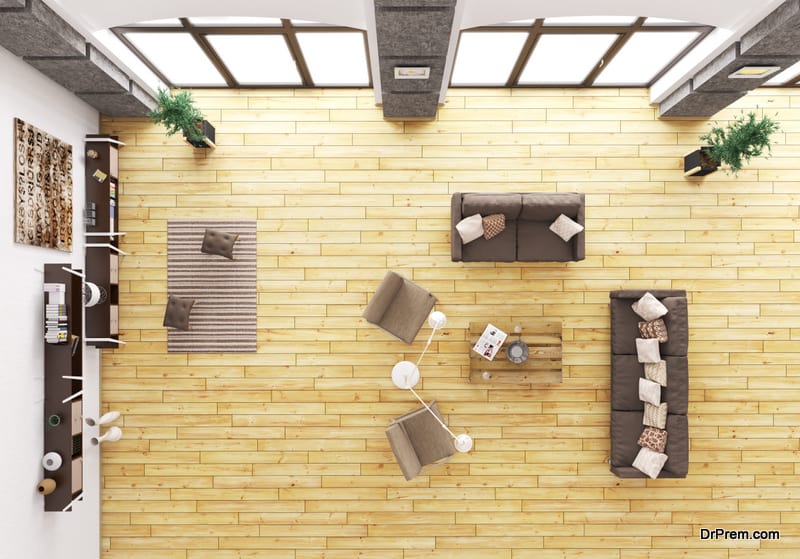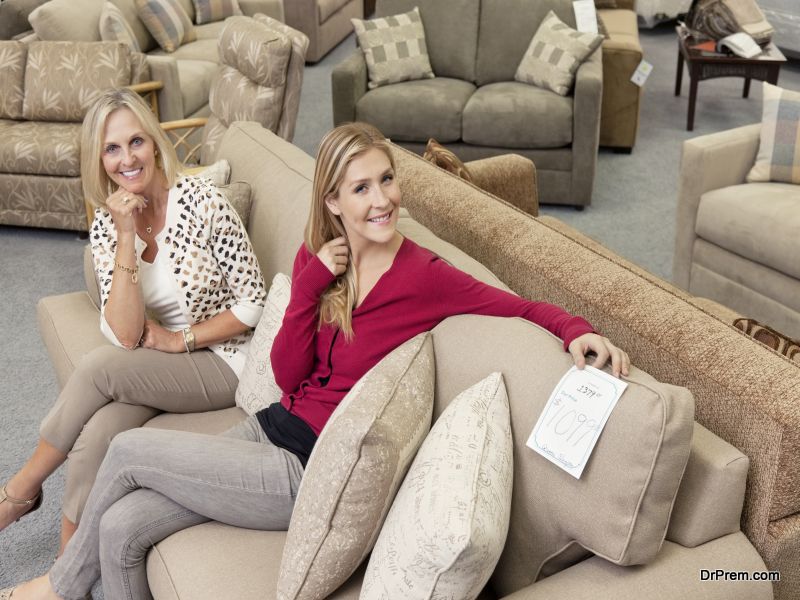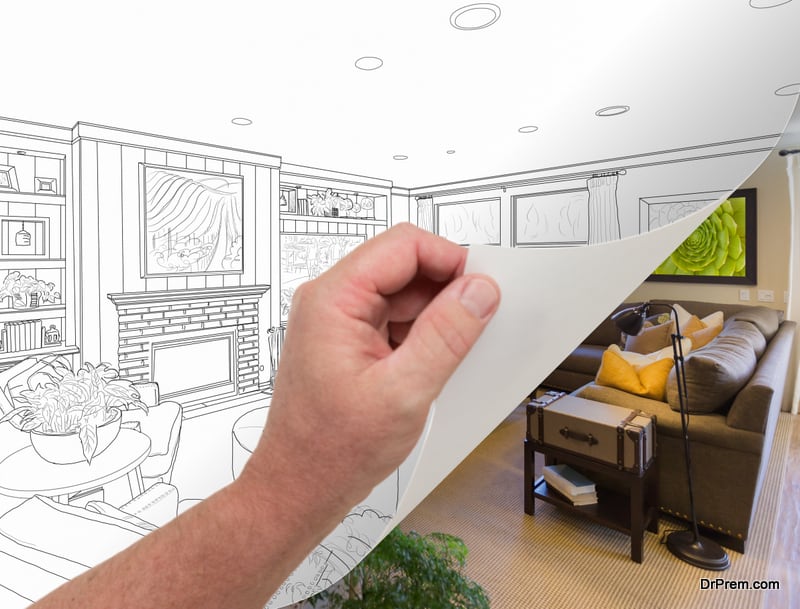Feng Shui, according to many online dictionaries, is “the Chinese art or practice of creating harmonious surroundings that enhance the balance of yin and yang, as in arranging furniture or determining the siting of a house.” This definition is fundamental to know and understand when you’re rearranging your living room layout to improve your mood.
It’s true that rearranging the furniture and accent pieces in your living room can affect your mood and emotions, but it is difficult to determine how this possibility can be brought to light. The idea behind the living room layout mood changing concept is that if you pay enough attention to detail, colors, fabric, etc., you’ll be able to change the way your mind perceives the room. In this brief article, you’ll learn the types of moods and emotions your living room is capable of provoking.
You’ll also learn the concept of color theory, a short and simple guide explaining what each color symbolizes in your living room. Mix the emotional impact well with the defined colors, and you’ll create an improved mood from your perspective.
The Beginning – Devising Your Plan
 Before you start moving furniture and items around in your living room, you’ll want to take a step back and think your plans through. First, think about who will be using this room. Will you be the only one lounging in the living room? Will you share the space with a significant other, roommate, or family? Will you have guests over regularly? You’ll want to plan accordingly.
Before you start moving furniture and items around in your living room, you’ll want to take a step back and think your plans through. First, think about who will be using this room. Will you be the only one lounging in the living room? Will you share the space with a significant other, roommate, or family? Will you have guests over regularly? You’ll want to plan accordingly.
Mood
For instance, if it’s just you, devising a plan to fit your mood will be easy. If you have to consider other people or guests, you may want to tend to a neutral mood. For example, if it’s you and your wife or husband living in the space with minimal house guests, you can aim to create a romantic living room layout. However, if you do have guests over regularly, you may want to lean towards a happy or comforting plan. We’ll get to the options soon.
Seating
When devising up your living room layout plan according to Feng Shui, you’ll also want to think about seating. Once again, if it’s just a few people in the living space, maybe you can save a few extra bucks on furniture and purchase a loveseat and two chairs. If, on the other hand, you’ll be having a lot of company, you’ll want to make sure the seating arrangement encourages conversation, possibly with a few couches and recliners or chairs. Keep in mind, mounting a line of chairs against a wall is not an inviting or accepting idea, especially if you have guests over often.
Walking space
One of the last things you’ll want to consider before picking your moods and colors is how you, the people you live with, and your guests will get around the room. You need to make sure there’s enough space to walk around; don’t overcrowd the living room with unnecessary items, as this will create frustration and cause bad moods.
Creating Moods & Emotions
 Once you’ve figured out how many people will be visiting the living room, how much furniture you’ll need to purchase, and where you want to place the furniture and accent pieces, you’ll want to move on to creating the mood and emotion of the room. To do this, you’ll need to pay close attention to colors, details, fabrics, etc.
Once you’ve figured out how many people will be visiting the living room, how much furniture you’ll need to purchase, and where you want to place the furniture and accent pieces, you’ll want to move on to creating the mood and emotion of the room. To do this, you’ll need to pay close attention to colors, details, fabrics, etc.
There are dozens of options you can choose from; some homeowners like to lean towards a relaxing living room environment, whereas others like to base the room on themes, like games, art, or electronics. Here, we’ll mention five of the most commonly evoked moods and emotions to get you started. More research may be necessary to find the option that’s fitting to you.
1. Happiness
Moods and emotions that bring out feelings of happiness generally make a great first impression. Living rooms are gathering places in your home, and folks tend to linger there if the first impression is welcoming. Focus on light and airy concepts with a sprinkle of elegance; don’t make the room feel too hectic, but don’t encourage sleepy behaviors, either.
2. Comfort
Living rooms usually immediately make our minds think of a comforting and relaxing environment, but that’s not what every homeowner wants. Comfort is a great mood and emotion to provide people with, and it’s not difficult to achieve. Choose some warm textured fabrics and rich colors for materials and paints, and you’ll be on your way to a relaxing living room.
3. Pride
Homeowners like to impress their guests, it’s an instinct. If you’re choosing to display a pride-like statement with your living room layout, you’ll want to do so by spending a few extra bucks on the scene. Add a little drama for a more significant effect.
4. Safety
Parents are the ones that lean towards this mood and emotion, especially if toddlers are running around the house. This mood or emotion needs to be child safe all around, if possible. That means the electronics need to be hidden and the plugs need to have guards on them.
5. Romance
Romance living room layouts may not be welcoming to house guests, but if you and your lover are generally the only people that set foot in the living room, you won’t have a problem choosing this option. Aim to select fabrics, colors, and furniture that’s ‘soft and touchable.’ Flowy fabrics or drapes can give the room that extra oomph it needs.
The Color Theory
 Color has a considerable impact on your mood and emotions. Think about it: You go to a fast food restaurant to eat lunch. The walls are bright red and yellow, and it’s just not something you want to stare at forever. So, what do you do? You eat quickly and get out, to go back to work or go home. That’s what the fast food restaurants are trying to do; get you in and out so that the next round of customers can do the same.
Color has a considerable impact on your mood and emotions. Think about it: You go to a fast food restaurant to eat lunch. The walls are bright red and yellow, and it’s just not something you want to stare at forever. So, what do you do? You eat quickly and get out, to go back to work or go home. That’s what the fast food restaurants are trying to do; get you in and out so that the next round of customers can do the same.
Below, we’ll briefly state what each color provokes, and then you’ll have the opportunity to pick and choose the ones that make the most sense in your living room.
1. Black
Black is an intense color, evoking power and authority. The walls may not look so good painted black, but black furniture will showcase a sense of elegance, luxury, and drama for all to see.
2. Grey
Grey is a standard, neutral color that can be used to bring forth calmness. If you’re aiming to develop a comforting living room layout, grey is a safe color to use.
3. Pink
Pink is very feminine, and usually only found in little girls’ bedrooms. On occasion you’ll find this bright and bold color in the living room, making it feel friendly and inviting.
4. Red
Red is a dramatic tone, depending on the shade you choose. Most romance living room layouts have substantial amounts of red engulfing the room, evoking passion and drama. Red vases and miscellaneous living room items stand out the most.
5. Orange
Orange is a color that cannot be in large dosages, but it does encourage energy and playfulness. This warm and positive shade aims to better a living room layout in small increments.
6. Yellow
Yellow is super bright and welcoming, which is why it’s primarily in kitchens. The joyful and fun color can provide a sense of warmth and positivity if added to a living room layout.
7. Green
Green is associated with nature and relaxation. Often, homeowners do not add this refreshing color to the living room in the form of items. Instead, green is typically introduced by way of living things, like plants and flowers.
8. Blue
Blue brings harmony to a room, with tranquility and peace following it. Most living rooms contain blue themes.
9. Purple
Purple is a creative, yet royal color to choose. Combined with other colors, this shade can bring an artsy vibe to your living room. Mix it up with bright shades of purple or eggplant tones to give it that extra fantastic look.
Now that you know the basics of mood and emotion for your living room layout, you can yin and yang (or Feng Shui) them to the best of your ability. Try to get creative with it. It’s fun for us, it’ll be fun for you, too!
Article Submitted By Community Writer




